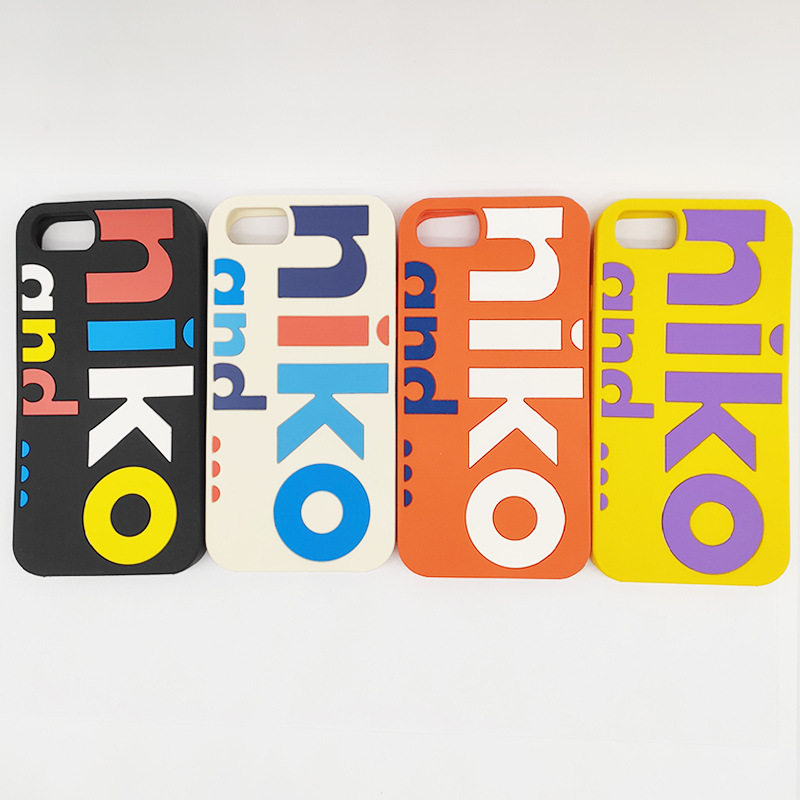The fourth retail revolution, no one will become a breakthrough point
1. Three changes in retail
No one retail has been very hot recently. Now I mainly talk about the fourth retail revolution and the unmanned retail framework. What is the development history of supermarkets and convenience stores?
Baidu Index on the 10th of July, Amoy coffee, the market response of unmanned supermarket concept has far exceeded the sharing of bicycles. Everyone has a very strong sense of the unmanned supermarket, because when people go to the supermarket, it is sometimes very painful. Once new things come out, they are very concerned about this matter.
Let's take a look at the changes in retail.
The first change: From the very beginning, retail is a front shop model, you want to buy a fruit to a shop, to buy meat to another place. The initial state was in accordance with this fixed pattern, but it was later broken down. It became a mall and made the shop a counter. For example, selling knits here, selling small food there, and reaching a node completed other shopping.
The second change: the chain. Chaining is the standardization of all processes and decisions.
The third change: the opening of supermarkets, whether independent stores, supermarkets, or chain. All of their products are enclosed. In such a situation, a counter needs one person. He can only serve one customer, so the efficiency is very low.
Once it is opened, its entire market becomes very different. Where is the difference? For example, there are n points in the outermost circle. If you want to buy 8 items in one shopping, you need to go to 8 different bazaars.
Now you only need to go to a department store, so the overall efficiency will be improved by n times. Then, from a closed department store to an open-frame supermarket, you become a person. You don't need to communicate with your employees on a one-to-one basis. You can go when you get something.
2, no retail and the fourth retail revolution
So, what does the effect of uninhabited retail or cashiers look like after they are unmanned?
From a time and effort point of view, in this form of supermarket, we may have spent 20 minutes to buy, queuing for more than 10-20 minutes. If it is purely unmanned, the cash register may take up to 10% of the time. In terms of efficiency, from the point of view of the supermarket, you can save the cashier counter, and the SKU will be greatly improved in the open shelf.
We can see that from stand-alone stores, department stores, to open shelves, it has multiple levels of improvement in time, labor, efficiency, SKU and so on. When it comes to unrequited retail, its uplift is up to 50% or double, and it does not reach high levels. But why is it linked to the fourth retail revolution?
Because the back-end of department stores corresponds to the production process of goods, many things are not required for factory production before, so that the former owner can sell them after finishing. At the beginning of the last century, many industrialized large-scale production and sales began to be independent. You don't need to do it, but only sell it. This is the path of department store.
After the chain is a process of standardization, doing a large-scale expansion. The openness of supermarkets is based on bar code informationization. Front-end, mid-end, and back-end are all integrated, regardless of experience or efficiency, all are pulled up. So, this is a three-time retail revolution.
There is no such high efficiency increase in unretailed retail sales, but I think that no retail can be equated with the future or the fourth retail revolution. Because in the face of a problem that has not been solved since ancient times, the physical retail store does not know who the user is. It may have members, customers, or orders. However, it does not own the user, so it has to reach the user. .
This is in fact comparable to the changes in department stores, barcode cashiers, and supermarkets. In the offline physical stores, if you can do anything like Ali and JD, you can directly reach out to users. Sufficient to become a revolution in retail sales.
Another is the digitization of people, fields, and physical entities. In fact, the mall does not know where the user came from, who it was, and what he did with the goods. Today's supermarkets, convenience stores, and department stores do not possess this data. These data will greatly drive business models or corporate operations, because in the past we may have made some changes manually or with very little data. Now the data can be used to drive the operation of the company, or even become completely different.
So, on this basis, retailing is especially like supermarkets, and their data can be very valuable. Its data feeds data inventors, providers, and system providers with the same scale and profit size. If these data are available, why not include these values ​​in their own framework?
3. Why is no one cash register a breakthrough?
However, the first problem that exists now is the need for unclaimed cashiers. Why does the cash register need to be unmanned?
When we go to a physical store, contact with the business or shop, one of the necessary actions is cash register. And in some industries, especially supermarkets or restaurants, its cash collection process is very painful and takes twenty to thirty minutes. At this time, if the problem is solved, the user has the motivation to go to the App.
But why didn't this piece push it up? Because there are still some technical problems to be solved. Therefore, for the user, the only point he has downloaded is the cash register. Therefore, if the cash register is unmanned, the whole process will be strung. You must acquire the user, and then turn it into a cash register, and turn it into an unmanned one. The data inside it will run through the entire App and offline sensors. This is something that every unattended retailer does without cash.
Of course, no amount of cash register can be further enhanced. I don't care whether you have paid or not. As long as you have come to my system and do something, the system will automatically record it. For the back-end, we can see that the department store corresponds to the trend of the times behind it. It is the industrialized production of goods, and the chainization corresponds to the standard of process, which is the large-scale expansion of the company.
The opening of supermarkets is finally based on the informatization of front and back ends of bar codes, and the state of nobody, because in the past it was human-human interaction, which later became the interaction between humans and robots. It was comprehensively informatized and intelligent, so it was said to have Behind the trend of the times is supported by it. It is necessary to formulate a plan based on the trend and know what kind of things you are doing.
For the fourth time, I think that it is comprehensive digitization and informationization. This is the retail transformation. Its main two topics are: offline online users and digital entity space.
The primary problem to be solved is to convince users why download the app? Why online? This point, in some industries, the only possible breakthrough is cash register.
Is it more space for supermarkets or convenience stores to make cashless cash? We look at the Baidu Index on July 10th, searching for the concepts of “unmanned supermarketâ€, “unmanned convenience storeâ€, and “unmanned retailâ€. In fact, the unoccupied supermarket has the highest index. The real question is, are you going to settle in the supermarket for 20 minutes? Or solve the problem of the convenience store's queuing for 2 minutes? Obviously, especially those in the home, they are very particular about this issue.
Here we also need to consider the ultimate state of the future, because the big supermarket form is the slowdown in the growth trend, the convenience store's small form trend still exists, and what kind of state is it? Judging from the previous changes, it actually turns from a small point to a big one and eventually becomes a supermarket.
The convenience store is a reverse trend in the process of growing from small to large. We can pursue it more closely and more precisely. These small demands are only in big shopping malls, and the trend of more and more categories is more complete. There is a small trend inside.
Because there is no final state of the convenience store, for example, if I want to buy clothes to go to a shop and buy pork to go to another shop, the shop may be initially independent. Of course, the trend will still tend to be integrated shopping, but it will still be based on sociology. Some of the things that are based on some of the more temporary needs of everyone. Therefore, in the large space of the supermarket, it is a more general demand. The convenience store is a small, fragmented demand. The large demand is still in the large space.
In fact, there are still many problems. For example, people who do creative ideas may not have ideas or technologies and can only do it based on their existing advantages. Through many case studies or we just discuss these issues from a technical point of view, we can find out whether it is 24 or not. In fact, it is still confined to fast-moving consumer goods, convenience stores, or supermarkets. It hasn't expanded into clothing, medicines, or even food and beverages.
Why did you not expand to? Or is it that nobody has ever discussed these things? Because the technology is still not mature enough, after saying that it is possible to choose, it depends on your existing resources and your own understanding to do these programs.
However, when we do these programs, we will also do it from the needs. We already have these needs. Then we choose to share these things with common points.
4, supermarket scene and shopping cart settlement
Looking at the selection process, I can sum it up. Because you have to cash in, you have to know who bought what? This thing may be directly on the merchandise to do some hands and feet, for example, what they always do, labeling the goods, then you do some sensors on the shelf to identify the goods, or the interaction between people, to account for him. Or in the state of the supermarket, there is a shopping cart, which is done on the shopping cart. It can also be done on the cash register.
In the form of a supermarket, why is the cashier not possible? In fact, the real problem with supermarket queuing is that, for example, I have 200 people shopping inside, but 200 people did anything at the time of shopping. They weren’t perceived by the system. They only went to the cashier and they were serialized one by one. Dealing with this is the fundamental reason why supermarkets line up or line up anywhere. Therefore, in this block, the cash register is definitely a problem that cannot be resolved.
In the other three aspects, whether it is shelves, shopping carts, or commodities, it is theoretically possible. Then we can say from three perspectives. For example, we have given a parameter to measure the relationship between the three of them. A shopping cart equals 25 shelves and equals 200,000 commodities.
That is to say, the life cycle of a shopping cart can sell 200,000 commodities or 25 shelves. We take 200,000 products as an example. The cost for each label they attach is 10,000 yuan, then 20,000 yuan is needed. For shelves, 800 yuan for each shelf, and for a shopping cart, each shopping cart needs 2 yuan. Ten thousand points.
From an operational point of view, do you want to stick 200,000 times? Or do 25 shelves? Or go to make a shopping cart? From a time point of view, are you going to produce a shopping cart, or are you going to produce 25 shopping carts or something else?
In fact, I just discussed a lot of details that haven't been mentioned. For example, are you doing hardware or system retailing? This piece I think is a difficult question to discuss because it is in a dynamic development process. Many of us who are in the retail direction will feel that this is a retail service, but we can see that in the entire commercialization of China, within a short period of 40 years, there have been dozens of waves or dozens of waves. Therefore, the possession of resources now does not mean that it will possess resources in the future.
This is a very simple truth. For example, if you open a supermarket, you can online all the users and get a lot of data, then you can compete with any supermarket and you can definitely defeat him. Your operation Cost, efficiency, user perception and experience are very much improved.
Because in retailing, for users, they are concerned with the value and experience of the product. We imagine why you went to that supermarket instead of going to this supermarket? For us now, mainly because of its proximity, there is only one supermarket within 2 kilometers of our house.
Well, there may be more choices in the future, because it is fast. In the near future, you may still need to queue for 20 minutes, which means that you have to go to a range of 5 kilometers. Then you can have a range of 3 kilometers or 10 kilometers. Suffering, so to expand the user's choice, the business's competitive advantage will be more prominent. And you've got a lot of data in physical stores, and it's a big deal to drive the entire business.
5. The future belongs to the creator of value
We have just discussed so much. It belongs to the trend of comprehensive information and intelligence in retail stores. Who is the future? In fact, it is the creator of value. For the user, giving him lower prices, better quality, in fact, the retailer's room for improvement is very limited, what is the value you can upgrade? I don't need you to line up for half an hour, or you can provide more recommendations based on more refined data and give you more discounts, which is what you create for businesses, users, and the entire ecosystem. More value, this is a reliable logic.
So who does the future belong to? This is actually hard to say. It requires a war. It requires you to compete with each other to solve this problem, because even if you say you are the best in the world, you are the most contributing, but all the final things are It is to rely on a battle to speak, who wins, who is the final winner.
In the current trend, we can see Ali, JD, and Xiaomi. They are all working on the line. Many capitals are also watching. If the two forces are subverted, it is difficult to say what advantages the existing entity's retailers have, because only those who have changed can master it.
Silicone Phone Case
Our factory can produce various of silicone phone cases for different brands . Apple , Samsung , OPPO, HUAWEI and so on .
This is our silicone phone case information below
- [Support Wireless Charger]CAN WORK with wireless charging. Liquid Silicone Case compatible with iPhone 12 mini(5.4")(2020 Release)
- [Durable Liquid Silicone Case]Liquid silicone rubber,surface layer smooth .Upgraded Thickness:2.3mm.(Normal just 1.8 mm).Anti-fingerprint,scratch-resistant performance, drop protection
- [Full Body Protection]1mm lip outer design, raises above the screen slightly, protect your iphone screen or camera dropping or laying face down on surface
- [Exquisite Tactile Button]Access to all ports, controls & sensors. Buttons sense sensitively
- Increase bottom protection, the thicker silicone material to protect enhanced. Effectively buffer the impact of falling the phone.
-



-
YDS are specialized in Silicone Bottom Sleeve Cover , Silicone Bottle Sleeve ,Silicone Hand Sanitizer Holder,Silicone Sanitizer Bracelet,Silicone Bottle Holder manufacturers from China.
Our Factory Advantages:
1.Mold workshop and 2D and 3D engineer department
2.Solid siliccone compression machine and liquid silicone injection machine
3.Disney and Sedex 4P audit factory
4.ISO 9001,IATF16949,Raw material of FDA LFGB MSDS Certificates
Look forward to your cooperation!
Silicone Phone Case,Iphone 12 Pro Max Case,Liquid Silicone Protective Phone Cases,Cell Phone Basic Cases Covers
Shenzhen Yindingsheng Technology Co., Ltd , https://www.dgoemsiliconeyds.com